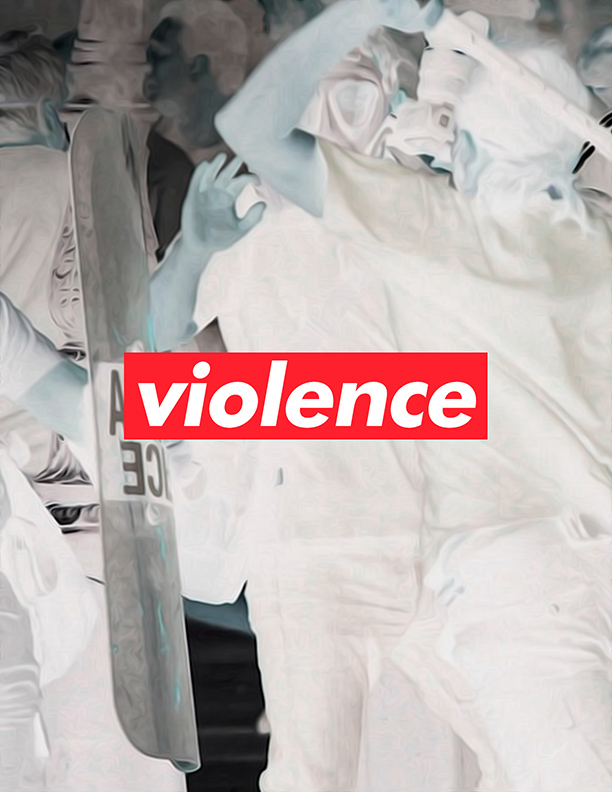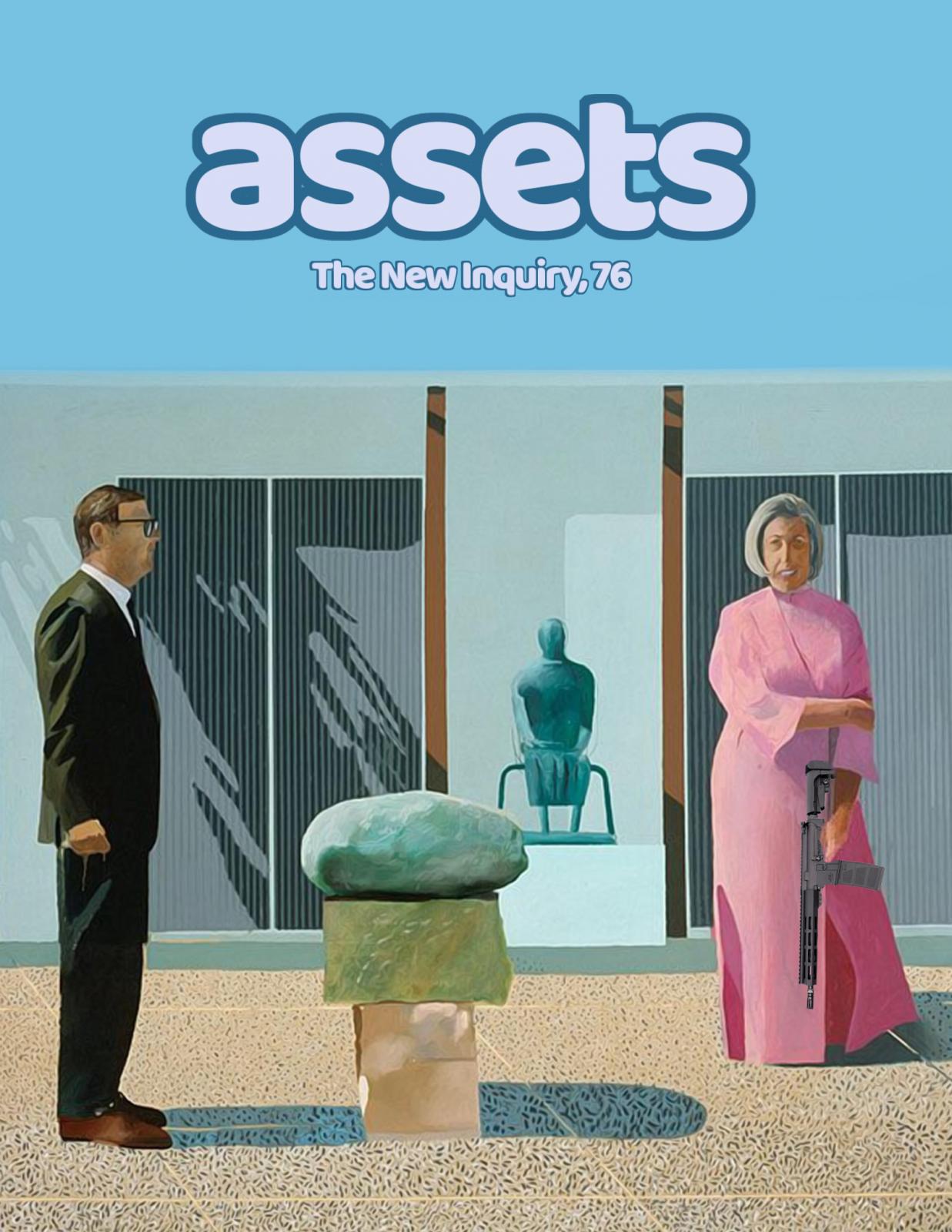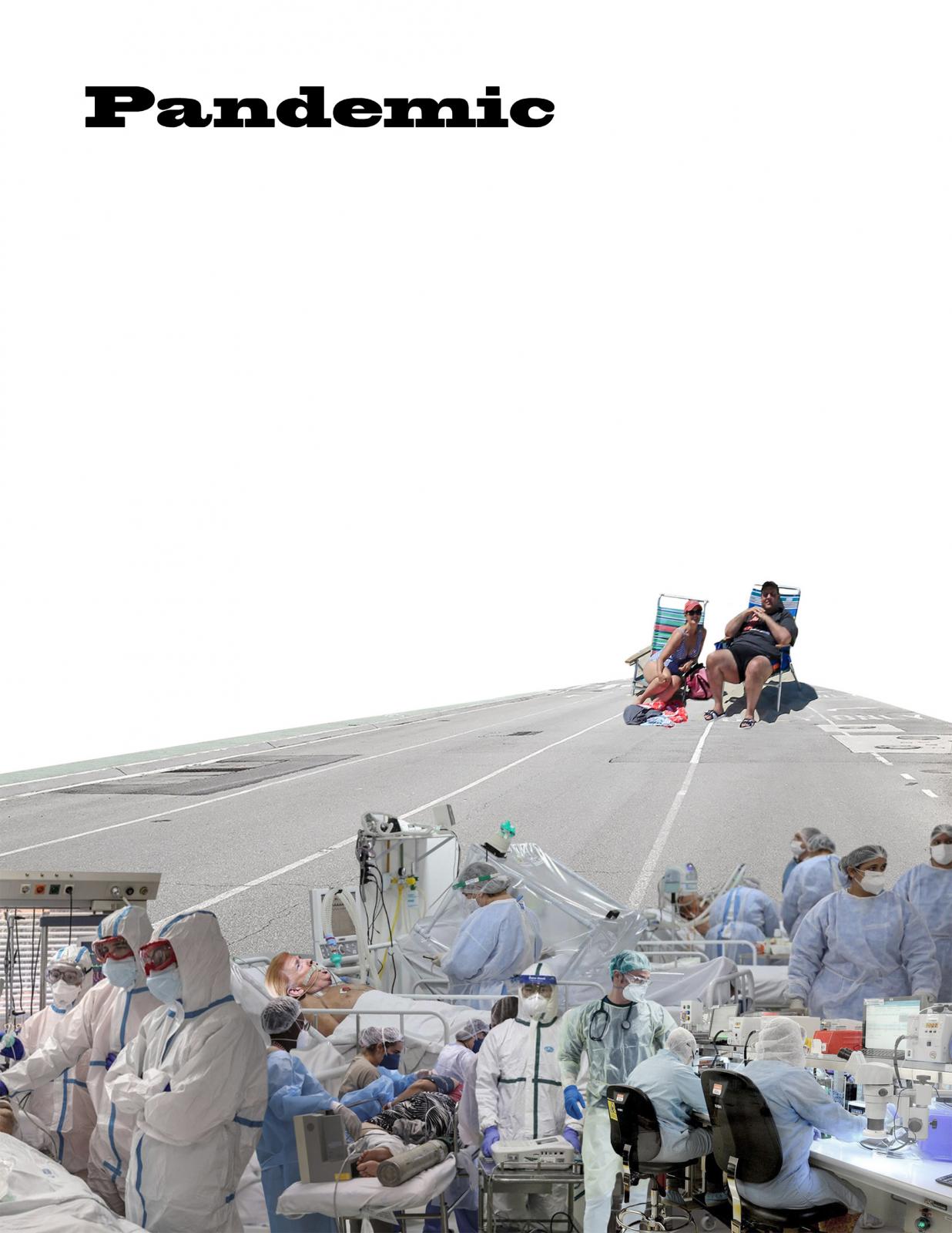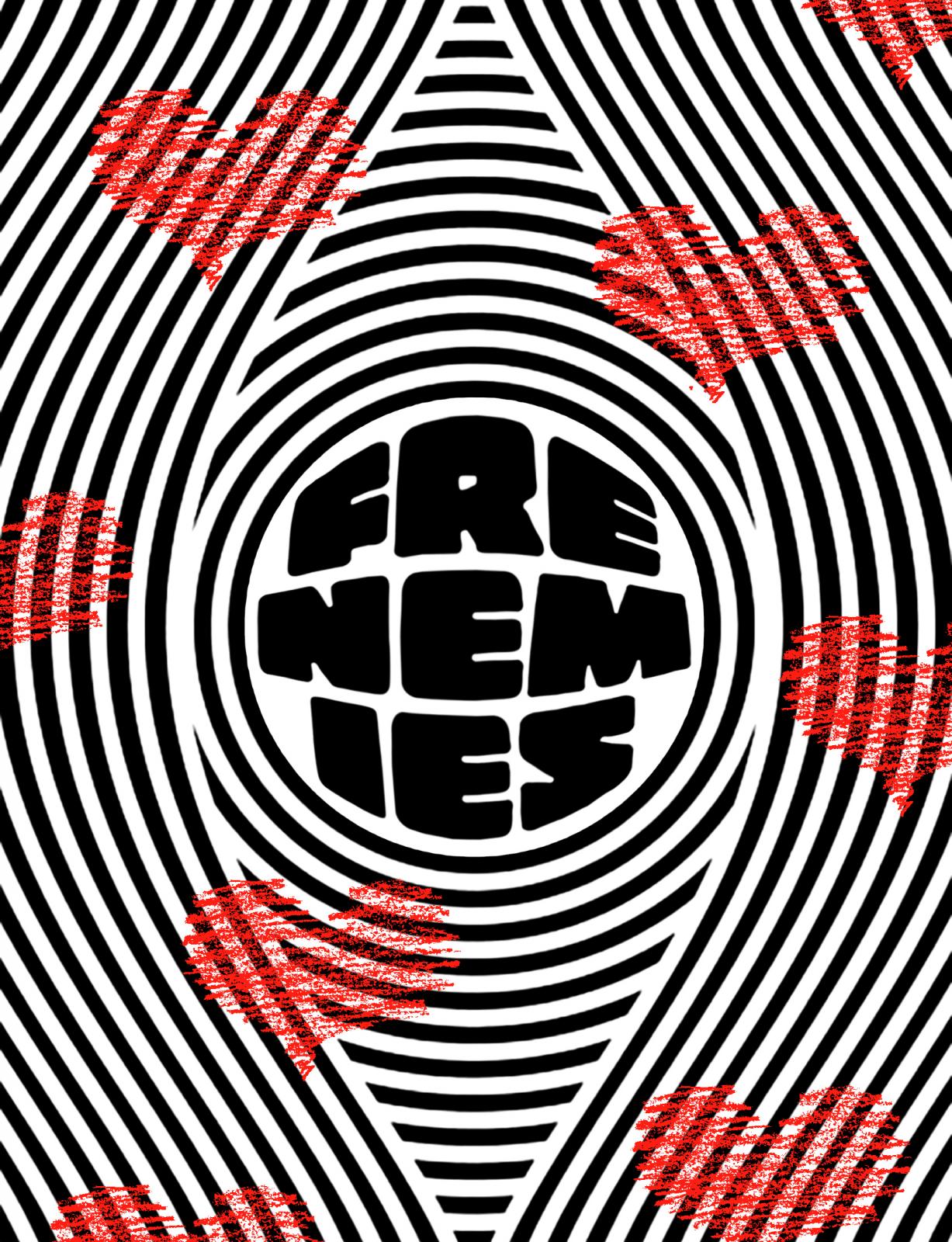Violence
Editors' Note
THE first commandment of violence is that it precede power; the second, that it pose as power’s last resort. Because the last resort is always exceptional—we were left with no other choice—violence is presumed to be atypical. When asked by a roomful of veterans to comment on her role in the Iraq War, Hillary Clinton stated that she views force as a “last resort, not a first choice.” Donald Trump lives in a last resort, Trump Tower, which is why Clinton tries to divert attention toward his discriminatory rental practices. No vacancies for black folk at his last resort. For white nationalists, Trump is himself a last resort: if he isn’t elected, said Ken Herrmann of Punta Gorda, “I’d go home and cry for four years.” State-sponsored violence, and its attendant calls for hate, make a pretense of palliative care. American politicians alleviate white tears.
Today violence is both at its most ostentatious and obfuscated in human history, represented as viral gore and as the cinderblock cells that hold our loved ones, friends, and comrades unbearably out of reach. Violence is a final recourse that portends its future form; it is a constant, demarcated not through history but through its outlines. Slow death on the Standing Rock Indian Reservation inherited its genocidal logic from settler colonialism; from the terror committed by America in Iraq was born the boogeyman central to today’s imperial wars in the Middle East.
Representatives of the state would like us to believe that state-sponsored terror is expedient and just. But the state’s monopoly on violence is a lie they tell for obvious reasons—the secret to killing a cop and getting away with it is not getting caught. The police are a force of occupation. They enter our homes, our cars, and call it their jurisdiction. The police made this clear when they stopped Philando Castile again and again, a total of 49 times, before shooting him dead.
In This Is an Uprising, an account of popular uprisings across the globe in the last five years, authors Mark and Paul Engler actively denounce guerilla acumen. Although the book was greeted warmly by the liberal press earlier this year, Lorenzo Raymond writes in his review that these revisionist historians resort to “outright dishonesty” in their mission to jam the bloody mess of social movements into an ahistorical paradigm of nonviolent “civil resistance.” Raymond sets the historical record straight while assessing the direction of the movement for black liberation, upon which all our prospects for freedom depend.
If black resistance has been flattened into narratives of civil (dis)obedience, so too has black suffering been rhetoricized as a violence belonging to the past. In the 19th century, a powerful synergy between the medical profession and the slave economy allowed both industries to claim prosperity. The current success of American medicine was necessarily dependent on the labor of black folk whose bodies were used, again and again, as the test subjects for new surgical procedures and vaccinations. Derek Ayeh calls for reparations to address this undying social ill: “While monetary damages may only be appropriate when repaying individuals directly harmed by unethical experimentation,” he writes, “all African Americans are victims of American medicine’s violent legacy, burdened by their suspicions as well as systematic inequalities, and so deserve similar restitution.”
If the body is a site of accumulation for state-sponsored violence, execution is doubly negating, designed to both nullify deviant bodies and to erase all records of state-sponsored harm. Texas keeps threadbare digital records of the people it officially executes, including their final statements. Hannah Bowlus investigates how doomed inmates uphold the settler ultraviolence at the core of Texas’s mythos through their last words, which live online in public perpetuity. After reading through all 538 statements on the state’s death row database—a chaotic archive lacking uniform reporting standards—she realizes that the corpse of a prisoner, forever still and guilty, may be the state’s ideal form for its most vexing subjects.
For all the horror made visible by a state’s meticulous record-keeping of its own violence, it’s what isn’t shown that often informs our bleakest fears. In Syria, people must love each other with the knowledge that at any moment, their families and friends may vanish without a trace, disappeared by a dictatorial regime’s agents or foreign-backed insurgents fighting a war on their own moral terms. Forced disappearance, as journalist Budour Hassan writes, “violently destroys hopes for reunification.” But all forms of oppression contain blueprints of resistance, and amid the slaughter and disappearance in Syria, many maintain hope for a justice deferred.
Such hope can seem quaint in light of the massive bureaucracies for killing that exist today. By far the most deadly is the United States’ counterterrorism apparatus, whose coordinated drone strike program includes the entire world in its scope. We know this thanks to attorney Jameel Jaffer and his work exposing the borderlessness of the lethal program the next President will inherit. Our interviewer Waqas Mirza asks Jaffer what the government’s mandate means for the growing number of people it deems a threat, and whether there’s any hope for redress through the law.
Central to the state’s counterterrorism apparatus is its military might, and Strategic Operations—an incubator that provides Hyper-Realistic™ training to military officials, law-enforcement, and potential recruits—seeks to redouble this force. Launched by a TV and film producer-turned military contractor, the company has reconfigured the military’s recruiting strategies by designing video games that simulate both combat and war-time medical care. In her essay on the military-entertainment complex, Remina Greenfield argues that although the U.S. military’s recruiting tactics disproportionately target low-income youth and students of color, the “Hyper-Realistic™” world of Strategic Operations is staggeringly white, obscuring the ways in which black and brown bodies suffer as subjects of war. Images of white bodies with severed limbs and bullet wounds populate the landscape of Strategic Operations, suggesting that white pain is uniquely deserving of medical care.
In the summer of 2014, hyper-realistic images of another genre circulated online: “Islamic State of Cat,” a now-suspended Twitter account, began sharing pro-ISIS propaganda interspersed ISIS militants often posing with images of cats and kittens. Deemed “mewjahids,” these cats embodied two of today’s most popular Internet genres—the meme and the selfie—to engage in what theorist W.J.T. Mitchell calls “a war of and on a body of images, one which (as always) finds a way to mutilate and destroy actual, living human bodies.” In his critical reading of this now-deceased archive, Matt Cornell argues that there’s “sadism in the process by which we render an animal cute, and a latent potential for cruelty and violence within the cute animal itself—a quality which is constitutive of its cuteness.”
Our columnist Zahira Kelly rounds out our issue with a look at how the global legacy of racist conquest manifests in seemingly innocuous scenarios. The colonial ambition is a never-ending one, reproduced in gendered beauty standards and the allocation of resources supported by an army.
It makes no sense to speak of violence in our time when violence has been systematically enacted across time. Violence cannot be flattened. The best we can do is render its current form and try to discern patterns, as our writers have done in these pages. If violence precedes power, we should study its contemporary articulations to anticipate where this power might lie in the future. Then, when the moment is right, we’ll seize it.
Featuring
-
Editors' Note, Vol. 56: Violence
-
Syria’s Desaparecidos
-
The Case for Medical Reparations
-
Feral Memes
-
Air Force Drone
-
Militain Us
-
Bloodless Lies
-
Closing Statements
-
Dear Marooned Alien Princess





